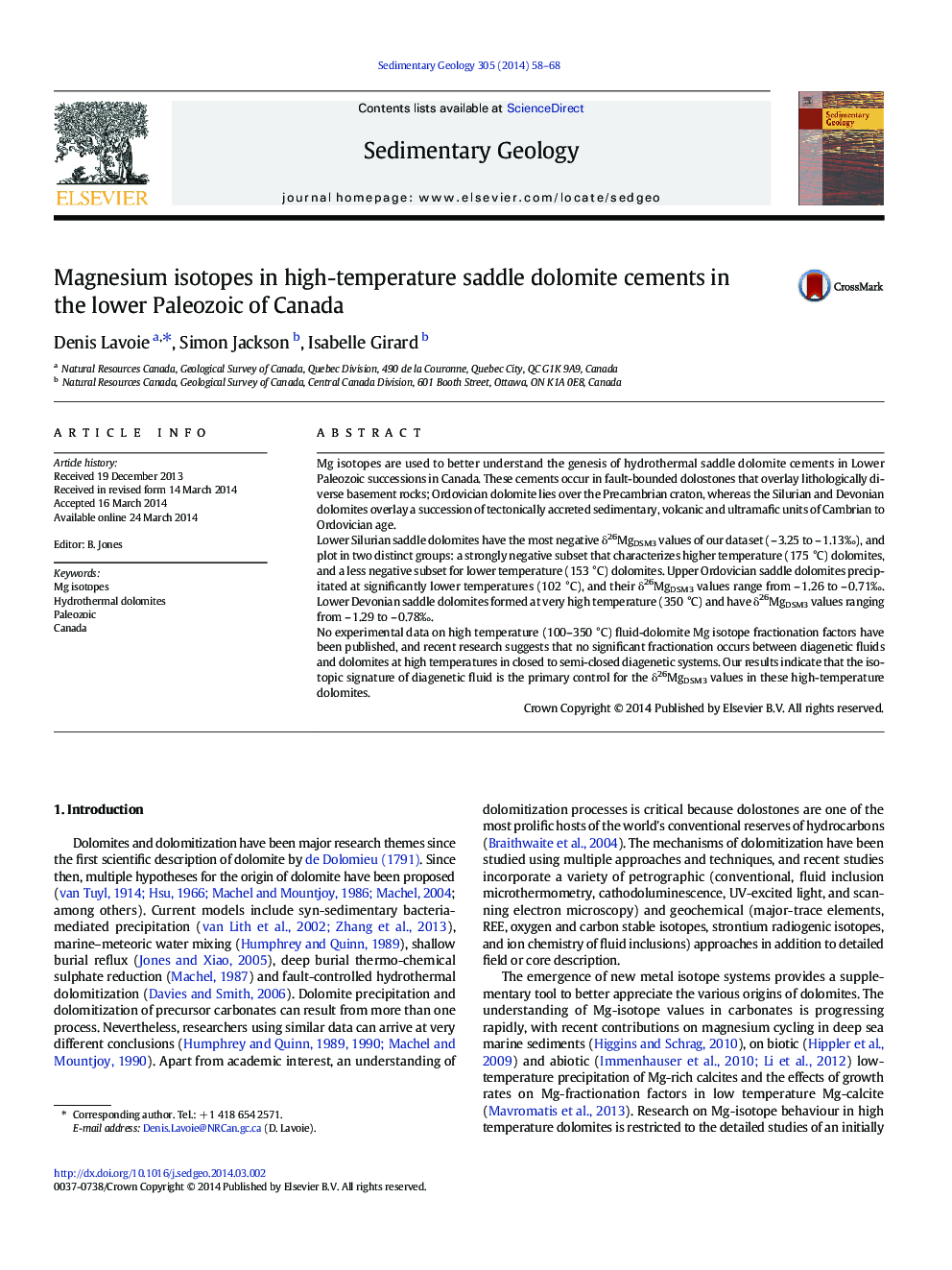| Article ID | Journal | Published Year | Pages | File Type |
|---|---|---|---|---|
| 4689402 | Sedimentary Geology | 2014 | 11 Pages |
Mg isotopes are used to better understand the genesis of hydrothermal saddle dolomite cements in Lower Paleozoic successions in Canada. These cements occur in fault-bounded dolostones that overlay lithologically diverse basement rocks; Ordovician dolomite lies over the Precambrian craton, whereas the Silurian and Devonian dolomites overlay a succession of tectonically accreted sedimentary, volcanic and ultramafic units of Cambrian to Ordovician age.Lower Silurian saddle dolomites have the most negative δ26MgDSM3 values of our dataset (– 3.25 to – 1.13‰), and plot in two distinct groups: a strongly negative subset that characterizes higher temperature (175 °C) dolomites, and a less negative subset for lower temperature (153 °C) dolomites. Upper Ordovician saddle dolomites precipitated at significantly lower temperatures (102 °C), and their δ26MgDSM3 values range from – 1.26 to – 0.71‰. Lower Devonian saddle dolomites formed at very high temperature (350 °C) and have δ26MgDSM3 values ranging from – 1.29 to – 0.78‰.No experimental data on high temperature (100–350 °C) fluid-dolomite Mg isotope fractionation factors have been published, and recent research suggests that no significant fractionation occurs between diagenetic fluids and dolomites at high temperatures in closed to semi-closed diagenetic systems. Our results indicate that the isotopic signature of diagenetic fluid is the primary control for the δ26MgDSM3 values in these high-temperature dolomites.
